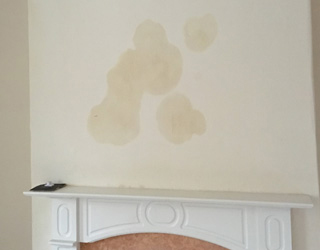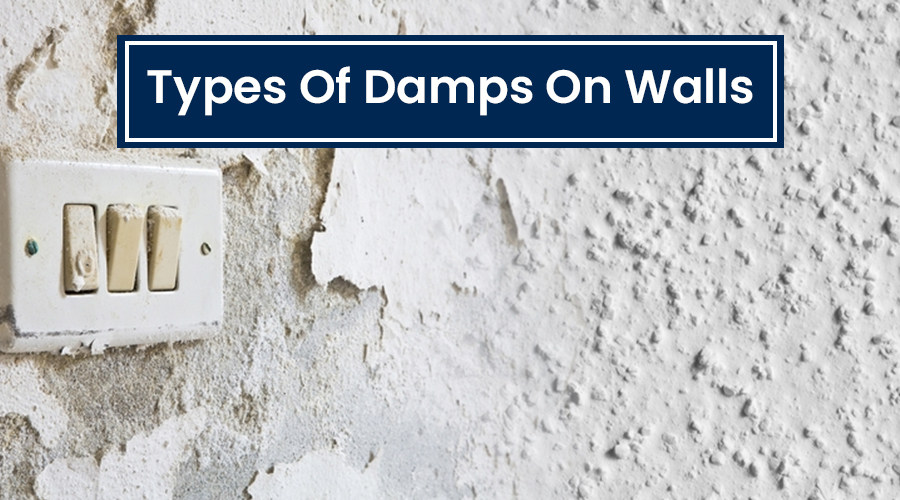Introduction
As the much-anticipated monsoon season approaches, we need to protect our houses and structures from seepages and damps. The impending arrival of the rainy season brings with it the inevitable challenge of dampness for most homes. A damp house is more than just an inconvenience for everyone. It creates a severe problem as it impacts the look of the home and results in an unhealthy environment that can harm both our health and well-being. Furthermore, encouraging pests attracts peeling walls, damages the inside of the house, and even results in rust and harm to the structure of the building. These defects and marks on the walls linger long even after the rain, resulting in the buildup of molds and fungus growing on the walls. In this article, we will discuss the types of damps on walls and ways to prevent this dampness effectively.
What Causes Dampness?
Dampness can be caused by various factors, including
Poor ventilation: Inadequate airflow in the house can trap moisture indoors, leading to dampness.
Water leaks: Leaky pipes, roofs, or windows can introduce water into the house, resulting in damp conditions.
Condensation: When warm air comes into contact with cooler surfaces like walls or windows, condensation occurs, creating a breeding ground for dampness.
The Effects of Dampness
Dampness can have far-reaching consequences for our health and the structural integrity of our homes. Here are some of the common problems associated with damp houses:
Health issues: Damp environments promote the growth of mold, mildew, and bacteria, which can trigger respiratory problems, allergies, and other health issues.
Damage to the house: Excessive moisture can damage wooden structures, paint, and wallpaper, leading to costly repairs and renovations.
Pest infestations: Damp conditions attract pests like cockroaches, silverfish, and dust mites, further compromising the cleanliness and hygiene of the house.
Types of Dampness
There are three primary types of damps on walls that are commonly prevalent:
Rising Dampness

Fig. Rising Dampness
Rising dampness occurs when groundwater or moisture from the soil is drawn upwards through the porous materials of a building’s foundation or walls. This typically occurs in buildings with poor or absent damp-proof courses, which are barriers designed to prevent moisture from rising. The moisture is absorbed by porous building materials like bricks and joints, causing damp patches and damage near the base of the walls. It typically affects ground floors and basements. Common signs of rising dampness include tide marks, peeling paint or wallpaper, flaking plaster, musty odors, and discolored or damp patches near the floor. It’s commonly caused by a lack of or compromised damp-proof course, which is a barrier that prevents moisture from rising up the walls.
Penetrating Dampness

Fig. Penetrating Damp
Penetrating dampness occurs when moisture infiltrates through the walls from external sources where water continuously leaks or seeps into the walls and ceiling, such as leaking roofs, damaged gutters, faulty plumbing, or cracks in the building’s structure. It can affect any part of a building and is commonly found on walls facing the prevailing wind direction or areas exposed to heavy rain. Signs of penetrating dampness include damp patches, water stains, peeling paint or wallpaper, and sometimes mold growth or fungus.
Condensation Dampness

Fig. Condensation Damp
Condensation dampness is a result of everyday activities inside the home, such as in the bathroom, kitchen, laundry area, and other areas with inadequate ventilation. When warm, moist air comes into contact with cold surfaces like windows or walls, it condenses into water droplets. This leads to damp areas, water droplets on windows and walls, and mold growth in corners or on surfaces.
Ways to Prevent Dampness
Preventing dampness on walls is essential to maintain the look and feel of the place as well as to maintain a healthy and structurally sound living environment. Here are some effective ways to prevent dampness:
Proper Ventilation
Good ventilation is crucial in preventing dampness. This helps to remove excess moisture from everyday activities like cooking and bathing, preventing it from accumulating on walls and causing dampness. Make sure your home has good airflow by opening windows, using extractor fans in kitchens and bathrooms, and keeping air vents unblocked.
Maintain Gutters and Downspouts
Regularly inspect and maintain your gutters and downspouts to ensure proper water drainage. Clear any debris that may block the flow of water and repair any leaks or damage. This prevents water from overflowing and seeping into the walls.
Fix Leakages
Repair any leaks in pipes, faucets, roofs, or windows as soon as you notice them. Even small leaks can contribute to dampness if left unaddressed. Taking immediate action prevents water from entering the walls and causing moisture problems.
Waterproofing Coatings
Consider using construction chemicals, waterproofing coatings, or water-resistant paints and finishes on your exterior walls, roofs, and especially in areas exposed to moisture, such as basements or near water sources. Waterproof products are designed to create a protective barrier that prevents water from penetrating the walls, reducing the risk of dampness.
Proper Drainage
Ensure that the ground slopes away from your home’s foundation. This helps to direct rainwater and groundwater away from the walls, reducing the chances of rising dampness. If needed, you can make adjustments to the grading around your home to improve drainage.
Install Damp-Proofing
A damp-proof course is a protective layer that prevents moisture from rising through the walls from the ground. If your home doesn’t have a damp-proof course or if it’s damaged, consider installing or repairing it. This helps to prevent rising dampness and keeps your walls dry.
Dehumidifiers
This is particularly recommended for high-humidity areas, coastal areas, or during the rainy season. Using dehumidifiers in such areas is extremely crucial. Dehumidifiers remove excess moisture from the air, helping to maintain a drier environment and preventing condensation on walls.
Regular Maintenance and Inspection
Regularly check for any signs of dampness, such as damp patches, musty odors, or mold growth, and fix such issues immediately to prevent them from worsening and causing further damage to your beautiful walls.
Conclusion
Dampness in the house is a serious concern that should not be overlooked. With the monsoon approaching, dampness will be one of the common issues most households will come across. However, by understanding the types of damps on walls, the causes and consequences of dampness, and implementing preventive measures, you can create a healthier, more comfortable living environment for you and your family. Remember, early intervention is key to preventing further damage and ensuring a dry, safe home. Take action against dampness and enjoy a happier, healthier living space.

